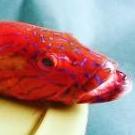-
Welcome to the eG Forums, a service of the eGullet Society for Culinary Arts & Letters. The Society is a 501(c)3 not-for-profit organization dedicated to the advancement of the culinary arts. These advertising-free forums are provided free of charge through donations from Society members. Anyone may read the forums, but to post you must create a free account.
Cook-Off 59: Cured, Brined, Smoked and Salted Fish
-
Similar Content
-
- 8 replies
- 316 views
-
- 9 replies
- 4,209 views
-
- 78 replies
- 18,271 views
-
- 1 reply
- 1,037 views
-
- 560 replies
- 231,647 views
-
-
Recently Browsing 0 members
- No registered users viewing this page.







Recommended Posts